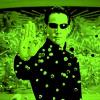Hello All,
New to this forum but computer consultant for over 20 years.
Easiest fix for black screen with flashing with cursor = boot off a Windows XP CD
R for repair on the first screen
At the command prompt type fixboot and hit ENTER ("Y" to agree to perform command)
Then type fixmbr and hit ENTER ("Y" to agree to perform command)
Type EXIT
Reboot
It is fixed.
J
And yet another Black Screen problem solved with this suggestion. In my case, when I booted from the Windows XP CD, the system asked for an administrator password to proceed (which I, of course, didn't know). I got around that by downloading and running the "Offline NT Password & Registry Editor".
I changed the admin password to blank, re-booted with the Windows XP CD and followed the above instructions. Re-booted and my computer came up exactly as it was before the problem arose.
If you need to use a password editor, make sure you read about it before you just use it. The one I used said you would lose any encrypted files on your system because they are somehow tied to the admin password. Fortunately, in my case, that wasn't a concern.
Thanks to all who helped solve my problem - I greatly appreciate it!
Edited by DLD, 18 October 2011 - 08:44 AM.

















 Sign In
Sign In Create Account
Create Account

